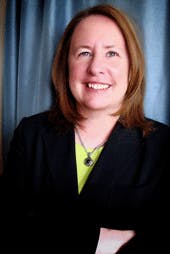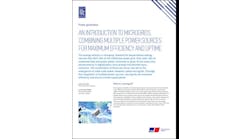By Elisa Wood
July 5, 2012
The temperature is 100 degrees and we have no air conditioning, no running water, no telephone and no Internet. It’s been 60 hours since our household lost electricity because of the super derecho, a rare surprise storm that swept ten US states and the nation’s capital on June 29.
About 5 million of us suddenly are living in conditions of a century earlier. And as we fumble in the dark, it’s easy to see how vulnerable our profound reliance on electricity makes us.
The notion of grid reliability is embedded deeply in the American psyche. We are so accustomed to electricity flowing, we can barely comprehend its absence. By habit, we still flip on the light switch when entering a room, even after the power has been out for hours.
We have good reason to trust. After all, behind the switch is the world’s largest machine, the North American power grid. With 211,000 miles of high-voltage transmission lines and 5,800 power plants feeding electricity to our homes and businesses, the grid is an engineering wonder.
A wonder – until a storm, or a heat wave, or even a squirrel chewing the right wire in the right place knocks out power to large swaths of customers.
It is the grid’s size and interconnectivity that makes it remarkable and efficient, but also susceptible to widespread mishap. We saw that most clearly in the Northeast Blackout of 2003, when a cascading event caused failures that tumbled quickly from neighborhood to neighborhood, state to state, finally leaving 50 million without power.
But the American consumer generally does not view a blackout as a sign of an inherent problem with our electric grid. Following the June 9 derecho, about 30,000 workers, some borrowed from utilities as far away as Texas and Oklahoma, went to work restoring power in the Mid-Atlantic and nearby states. Still, consumers will be angry at the length of time it takes. And if the acrimony is as great as it was in New England last year following the freak Halloween nor’easter, politicians will take up the cause, regulators will investigate and some utility executives may find their jobs threatened.
If our lights fail and aren’t fixed quickly, we believe someone must be to blame. The problem can’t possibly be the nature of the interconnected grid itself. In the consumer’s mind, electricity is like air; it’s just there for us. If it’s not, someone messed up.
The energy industry refers to this as electricity’s invisibility. In many ways it speaks to the product’s success. Who in America ponders whether or not to buy electricity? It’s a given that we will connect our homes to the grid, pay the monthly bill and the power will flow.
But, this invisibility, this success, is a failing too.
Power companies throughout much of the nation are striving to make the grid less vulnerable by smartening it, and some of this smartening relies on consumer interaction, taking control over our electricity consumption through new digital technologies. It includes installing smart meters and energy displays, building microgrids and developing more solar energy and other forms of distributed generation, which decentralize the grid, and therefore takeaway at least some of the exposure that comes with size. (Think the Death Star in the movie Star Wars.).
Suddenly we need to pay attention to electricity, and we’d rather let it stay invisible.
So to make smart grid work, the energy industry needs to figure out what makes the consumer work. A great deal of study is now underway on human behavior and energy. The goal is to encourage us to embrace smart energy technologies, so that we will use electricity more efficiently. It’s been tough going. Most consumers see no underlying problem with the electric grid. If it’s not broke, why fix it?
I can’t say I like being without air conditioning and water. But maybe the occasional loss of comfort is a good thing, an eye opener, a reminder that we need to contemplate our electric system’s inherent weakness and work to strengthen it. The grid can break. It is not too good to fail.
Elisa Wood is a long-time energy writer whose work is available at RealEnergyWriters.com







